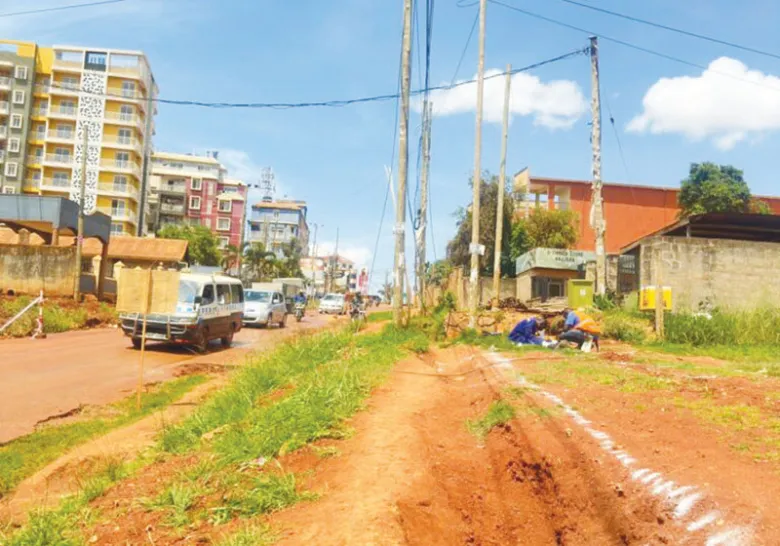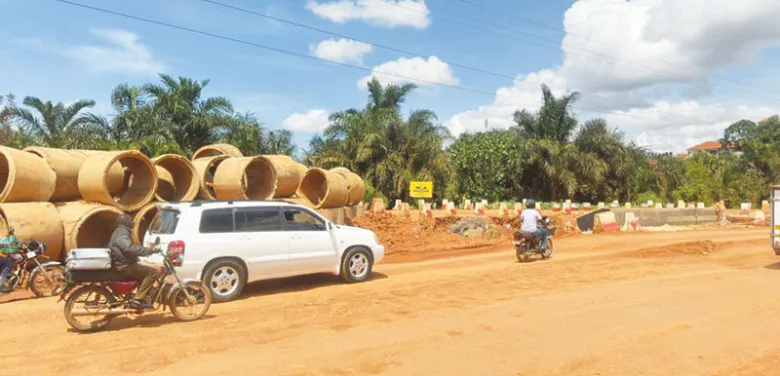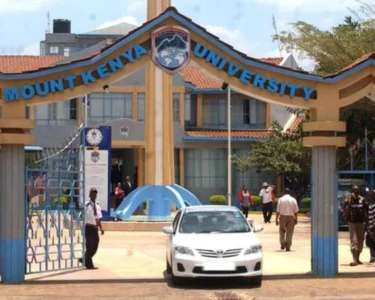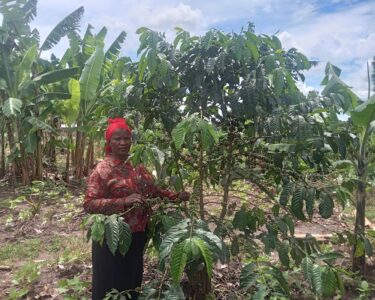By Our Reporter
On a hazy afternoon in Najjera, the half-finished Kiwatule–Kira–Kiwogoma road stands as both a promise of modernity and a reminder of disruption. Vehicles inch across uneven surfaces, traders battle clouds of dust, and residents wait in frustration for a project once sold as a gateway to transformation.
For many business owners along the stretch, that promise feels increasingly hollow. A bar operator, who preferred not to be named, put it bluntly:
“Who will drive through this muddy mess just to drink a beer for Shs 5,000 and then pay Shs 10,000 to wash their car? Business is collapsing.”
The 13-kilometre road was launched in September 2024 under the Chinese contractor CHICO, backed by World Bank funding, as part of an ambitious plan to ease congestion in the Greater Kampala Metropolitan Area. The design promised a four-lane highway linking Kira to its fast-growing suburbs. But nearly a year later, the road is only 70 percent complete.
According to Kira Municipality’s executive engineer, Eng. James Joloba, the biggest obstacle has not been money or technical expertise, but land. With no compensation scheme in place, officials have depended on voluntary handovers from residents. About 90 percent of landowners have signed agreements, but disputes continue to slow progress. Despite these challenges, Joloba insists that strict World Bank timelines and a five-year Shs 178 billion budget keep the project on course.
Yet while engineers talk budgets and timelines, traders are left counting losses. Once-thriving businesses—lounges, restaurants, and markets—are shuttering. “Migos Lounge, Gibbs, La Venti—they’re gone,” the bar owner said. “Even Octopus is barely holding on. Who wants to bump along this road after drinking?”

Others describe a different crisis: dust. Clothing trader Nalwanga Joan says attempts to control dust have backfired. “We asked them to spray carefully, but they splash water all over. Customers don’t want wet clothes.” For fish vendor Nakanjako Jane, the damage is even worse. “If fresh fish sits out for half an hour, it turns brown. Dust has killed my sales. We wash and wash, but how long can you keep that up?”
Restaurants too are struggling. One pork joint owner said sales had dropped from 50 kilograms a day to just 10. “Most of it ends up in the fridge now. Dust is everywhere.” Some residents like Musisi Jacob have given up entirely. “Whether it’s dust in the dry season or mud in the rains, I no longer use that road. I’d rather detour through Nalya–Kyaliwajjala.”
The Najjera road saga is not unique. Across Uganda, road projects are stalling under the weight of debt, arrears, and unresolved land disputes. Earlier this month, Works and Transport Minister Gen. Edward Katumba Wamala announced the suspension of 27 major roads and bridges, including the Kampala–Mpigi Expressway and Kampala–Jinja Highway.
Uganda requires Shs 3.15 trillion to keep roads moving in 2025/26, but only Shs 682 billion has been allocated. The shortfall of Shs 2.47 trillion, alongside Shs 1.07 trillion in arrears from previous years, has paralyzed progress. Land acquisition alone requires Shs 443 billion—money that simply isn’t there.
Katumba warned that nearly 2,000 kilometres of roads now require urgent maintenance, with 260 kilometres in need of complete rehabilitation. Left unchecked, he said, the costs could triple, amounting to preventable fiscal losses of Shs 180 billion.
Meanwhile, debt servicing continues to devour the national budget. In 2024/2025, Uganda allocated Shs 9 trillion to interest payments—a sharp increase compared to Shs 4.69 trillion two years earlier. Deputy Speaker of Parliament Thomas Tayebwa lamented that Shs 26 billion was lost in penalties to contractors in 2023 alone, a figure that translates to Shs 285 million bleeding from public funds every day.
For the people of Kira, these numbers feel distant but their impact is immediate. Their livelihoods shrink daily under the weight of unfinished work, dust-filled stalls, and dwindling customers. Some businesses have closed, others have moved, and those remaining cling to hope that the project will finish before their survival runs out.
“We want development, of course,” said fish vendor Nakanjako. “But at this rate, we might not live to enjoy it.”
What was once hailed as progress is now a cautionary tale of Uganda’s fragile infrastructure drive: where the debts pile up, the promises stall, and the greatest cost is borne not by government or contractors, but by ordinary Ugandans living along the way.






